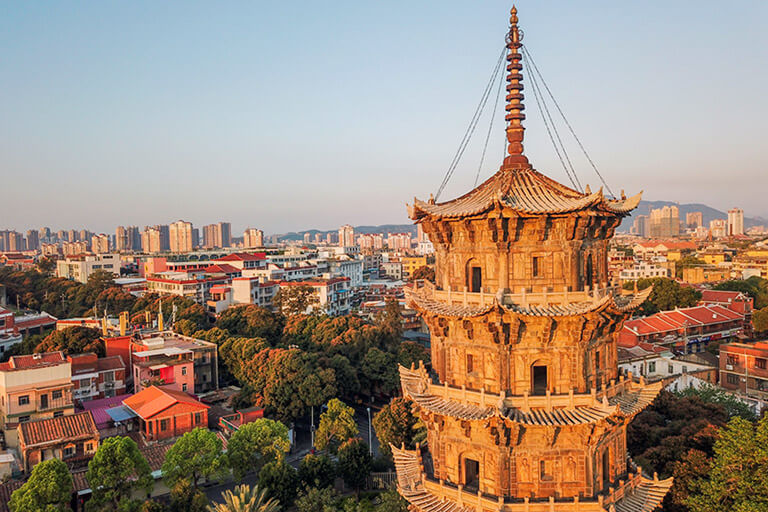Quanzhou, a famous overseas Chinese hometown and historical city, is located in the southeast of Fujian Province, connecting Putian and Fuzhou in the north and Xiamen in the south. Quanzhou is just a 20-minute train ride from Xiamen, but cut off from the crowds and retains a quiet and primitive feature. Quanzhou is the only starting point of the Maritime Silk Road that is recognized by the United Nations, and it was once considered by Marco Polo as "The Most Prosperous City in the World". Today, although the former glory of the city has gone, it still retained the most authentic custom of Fujian Culture. Wandering around Quanzhou city, the dark red folk dwellings, romantic dovetail roofs, covered the city in deep red, will bring you back to 2,000 years ago.
Quanzhou is a treasure house of diverse cultures, which not only has strong regional cultural characteristics, but also because of 1,000 years of overseas transport history, Quanzhou embraces cultures from all over the world in an inclusive manner. You can find all the religions in the world gathered here. Dozens of religious sites dot the city. Visitors may find Guandi Temple (关帝庙), Qingjing Mosque (清净寺), Confucian Temple (府文庙) and western churches at less than 100 meters long - Tumen Street (涂门街).
Why Visit Quanzhou, Fujian, China?
-
Harmony Hodgepodge of Religions - Well-known ancient author and thinker - Zhu Xi once commented Quanzhou as "In ancient times, it was once called the Buddhist country, saints and scholars were all over the streets." The most unique feature of this "religious museum" - Quanzhou is that it can accommodate different religious cultures on the same street. Strolling at Tumen Street, you can meet Buddhism, Islam, Taoism, Christianity at the same time. It’s really a culture shock that you might not be able to absorb all at once, but the city has managed to blend them together perfectly, without conflict, and develop together.
-
Most Famous Hometown of Overseas Chinese - There are over 7.5 million overseas Chinese, and over 760,000 Hong Kong and Macao compatriots are from Quanzhou. They are distributed in 129 countries and regions around the world. Over 2.5 million returned overseas Chinese and relatives of overseas Chinese live in Quanzhou. In Taiwan, 44.8% of the Han nationality (about 9 million) is originally from Quanzhou. You may pay a visit to the Museum of Fujian-Taiwan Kinship and learn more about the cultural history of the two sides of the Taiwan Strait.
-
Over 2000-year-old History Blend into Local People’s Life - Quanzhou, described by Marco Polo as "the largest port in the East ", can hardly show you how glorious it was in ancient days, how many years Anping Bridge stands staunchly against the wind and rain, how many ancient ruins are hidden in the old lanes and how many centuries have passed since Nanyin was sung. But the history here is not quietly buried in the ground. Living in harmony with cultural relics day and night is the daily life of Quanzhou people.
-
Unique Folk Houses - Oyster-covered Folk Fishing Houses and Red-brick Dwellings - Visitors can meet the oyster-shell houses at Xunpu Village called Kekecuo, with oyster shells stacked into silver walls and against the bottom red bricks in a contrasting color. The unique house might be common to locals, but for visitors, you would be surprised when you see them. The ancient house group of Cai Family is one of the typical traditional characteristics of Red-brick civil buildings in South Fujian.
Top Attractions in Quanzhou, Fujian
In Quanzhou urban area, scenic spots are mainly concentrated in Licheng district, among which West Street, East Street, Tumen Street and Zhongshan Street are the main tourist streets in Quanzhou. However, on a large scale, there are also some county-level cities under the jurisdiction of Quanzhou city, such as Nan’an, Jinjiang, Shishi and Hui 'an, where you can have a more pure and authentic taste of Southern Fujian Culture. It is worth spending time digging around.

Quanzhou West Street
West Street (西街), symbolizing the prosperity of Quanzhou, has witnessed the change of Quanzhou silently for thousands of years. Up to now, it is still the most complete ancient block preserved in Quanzhou urban area, with more than 20 cultural relics protection units at all levels. Walking here, you will have a feeling of shopping in the bustling city of the Tang and Song dynasties.
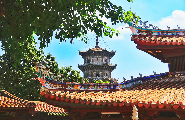
Kaiyuan Temple
Kaiyuan Temple (开元寺), the largest Buddhist temple in Fujian, has a history of more than 1,300 years. The most special spots in the temple are the East and West Stone Tower, The Zhenguo Tower and the Renshou Tower. They are the tallest pair of stone towers in China. They have withstood the test of the 8-magnitude earthquake and many typhoons, and still stand tall.

Chengtian Temple
Chengtian Temple (承天寺), also known as Yuetai Temple, is being praised as one of the three jungle paradises in Minnan. Entering Chengtian Temple is like breaking into a field of peach blossoms amid the hustle and bustle of the city. Your heart will be influenced by the silent atmosphere in the temple. Master Hongyi once stayed in the temple to preach Buddhism.

Guandi Temple
Guandi Temple (关帝庙), with more than 600 years history, is one of the six ancestral temples of Guangong, and one of the most prosperous temples in Quzhou. Many local people will come here to pay their respects and pray for the New Year. The architecture is beautifully carved there. In the evening, a stage will be set up in front of the temple to perform Quanzhou traditional opera.
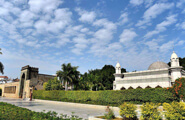
Qingjing Temple
Quanzhou Qingjing Mosque (清净寺) is the earliest extant Islamic architecture in China, which was founded in the Northern Song Dynasty (A.D. 1009). Such a temple with traditional Arab architectural style located on the ancient Street of Tumen, but with no feeling of strangeness, makes people marvel about the wonderful integration of different cultures.

Zhongshan Street
Zhongshan Street (中山街) is the most famous street in Quanzhou. It is the only and best preserved commercial street of row-arcade buildings in China. The colonnaded arcade building along the street embodies the essence of Nanyang style architecture, which enables people to shelter from rain and shade and makes it easier for people to get around.

Tianhou Palace
Tianhou Palace (天后宫) is the oldest Mazu Temple on the southeast coast of China. People always pray to Mazu for good weather before they go sailing. Many cities have Mazu Temple, but Quanzhou is the hometown of the "Sea God". Many devotees from Taiwan and other places would come here to trace their origins and pay tribute to Mazu.

Qingyuan Mountain
Qingyuan Mountain (清源山) is a famous Taoist holyland. It was called "The First Penglai Immortal Mountain in Fujian" in the Yuan Dynasty. Qingyuan Mountain has the largest stone statue of Laozi in China, with the most unique carving technique and the longest age. Moreover, you can climb to the top of Qingyuan mountain and have a panorama view of Quanzhou.
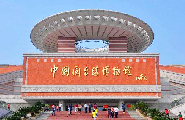
China Museum of Fujian-Taiwan Kinship
The main exhibits in the museum are about the culture and history of cross-Strait. You can see a giant painting of banyan trees made by blasting with gunpowder, which is 18 meters high and 9 meters wide, which is very shocking. The best way to learn about a city is to learn about its culture, and this museum is the class of Minnan Culture.

Xunpu Village
Xunpu (浔埔) is a small fishing village in Quanzhou, which is located at the marine outfall of the Jinjiang River downstream of Quanzhou Bay. Visitors may meet beautiful fishing women wearing flowers. The seafood here is absolutely fresh. Kekecuo, houses with oyster shells stacked into silver walls and against the bottom red bricks are highlights there.
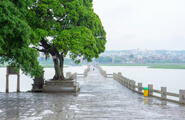
Luoyang Bridge
Luoyang Bridge (洛阳桥), one of the four famous bridges in ancient China, is a masterpiece of bridge architecture of the Han Nationality. It has a solid structure, beautiful figure, beautiful shape and extremely high bridge engineering technology and artistic level. There are many stone carvings and lions on the bridge. It’s an indispensable bridge for locals.

The House Group of Cai Family
Caizishen Ancient Dwellings Buildings (蔡氏古民居) is the most representative art treasure of architecture in Nan 'an. As an ancient building in the Qing Dynasty, the House Group of Cai Family is the representative of southern Fujian "Red Brick Culture". Each dwellings has carved beams and painted blocks with strong colors.

Anping Bridge
Anping Bridge (安平桥), also known as "Wuli Bridge", is the longest ancient stone bridge in China and a masterpiece of ancient bridge architecture. Located on the bay between Anhai Town in Jinjiang and Shuitou Town in Nanan, Anping Bridge enjoys the reputation of "The Longest Ancient Bridge in the World".
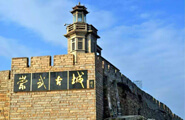
Chongwu Ancient Town
Chongwu Ancient Town (崇武古城) is close to the Taiwan Strait and is the most complete T-shaped ancient stone city in China. The ancient city is a castle built in the Ming Dynasty in order to fight against Japanese pirates. Ancient city walls, stone carvings and the rocks along the sea are highlights here. You may also meet Hui’an women around.
Quanzhou Weather & Best Time to Visit Quanzhou

Quanzhou city is located at a low latitude close to the sea. It has a subtropical maritime monsoon climate, and the weather conditions here are superior. The annual average temperature in most parts of Quanzhou is 19.5 - 21.0 ℃, the average temperature in the hottest month (July) is 26 - 29 ℃, and the coldest month (January) is 9 - 13 ℃. The sunlight hours are 1800-2200 hours per year and with a short frost period. The annual precipitation in Quanzhou is 1000-1800mm. 80% of rainfall is from March to September in the wet season, and October to February is the dry season, only 20% of rain falls during these months.
The best time to travel to Quanzhou is from October to May. Although it is winter and spring, the local temperature is not too hot or too cold. It is suitable for outdoor sightseeing and quietly experiencing the simplicity and purity of this small city. And there are many holidays during this period. You may have a chance to attend some local traditional celebrations.
Dressing Tips: Visit Quanzhou in summer, wear short sleeves and pants are enough. Also you need to pay attention to sun protection. Winter without severe cold, sometimes when the temperature is higher, wearing short sleeves and a coat outside is enough. But when cold air strikes, you need to add warm underwear and thick coats to protect yourself from cold and wet.
Quanzhou Transportation: How to Get to/around Quanzhou
Quanzhou is located on the east coast of Fujian, about 85km north from Xiamen and 170km south from Fuzhou. With a complete transportation system, visitors can get to Quanzhou by flight, bullet trains, car and buses.
How to Get to Quanzhou
Quanzhou Flight
Quanzhou Jinjiang International Airport
Location: Xiaxin Street, Jinjaing City, Quanzhou (泉州晋江市霞新街)
Quanzhou Jinjiang International Airport (泉州晋江国际机场) is the only airport in Quanzhou, about 12 kilometers away from Quanzhou City Center. Quanzhou airport has airlines to major aviation hubs in China, such as Beijing, Shanghai, Guangzhou, Shenzhen, Kunming, Chongqing, etc. And direct flights to Hong Kong, Taiwan and Southeast Asia are also available. Visitors may take cars, taxis and public buses to transfer between the airport and Quanzhou city.
Quanzhou Train
Quanzhou Railway Station
Location: Yunfeng Road, Fengze District, Quanzhou (泉州市丰泽区云峰路)
Quanzhou Railway Station is the only train station in Quanzhou, and there are only bullet trains. You can reach Quanzhou by bullet trains from Chongqing in the west, Shenzhen in the south, Shanghai in the east and Changchun in the north. Taking a bullet train is also the quickest way to travel from Xiamen to Quanzhou. There are over 70 D/G trains running between Xiamen (Xiamen Railway Station / Xiamen North Railway Station) and Quanzhou (Quanzhou Railway Station) from 7:15 - 22:40 every day, only takes 20-30 minutes to arrive.
>> Check more detailed information at Xiamen to Quanzhou Bullet Train, Private Car and Bus 2025.
Quanzhou Bus
There are two frequently used bus stations in Quanzhou, which are New Quanzhou Bus Station and Quanzhou Bus Terminal. There are direct buses to Suzhou, Shenzhen, etc.
Get around Quanzhou
There is no metro in Quanzhou city. Taxi in Quanzhou are affordable and frequent. Quanzhou also has a convenient city bus network, with buses running to almost every corner of the city. However, seldom do visitors choose them because it wastes a lot of time on the road. Quanzhou has too many streets and lanes. Therefore, manual tricycles are often used as an auxiliary means to transfer through streets and lanes
Quanzhou Private Car (with Guide Service included)
Though it is an easy thing to go around this modern city with a well-established transport network, you are still suggested to travel around Quanzhou by private car with guide service included.. And with the help of a private car, you can travel anywhere at any time you like and you may also extend your tour to Nan’an and Jinjiang, visiting the House Group of Cai Family and Anping Bridge. The price is affordable and the tour can be customized according to your interest, budget and plan. If you are interested, please feel free to contact us!
Quanzhou Accommodation & Where to Stay in Quanzhou

Most visitors would choose to stay in the urban area of Quanzhou city, for the main attractions like Tumen Street, Zhongshan Street and Kaiyuan Temple are all concentrated in the urban area of Quanzhou. However, Quanzhou is not a big city, almost all scenic spots in the city can be reached by taxi, so you don’t need to worry about the geographical location of hotels. There are many types of local hotels, ranging from economical youth hostels to five-star luxury hotels for you to choose.
Tourists who are catching up on an early flight can stay at hotels around Quanzhou Jinjiang Airport in Jinjiang City, it’s about 15 minutes’ drive from Quanzhou downtown. Or if you want to go to the seaside, living in Shishi city is easy to get to the Gold Coast. Shishi city is also not far from Quanzhou, about 30 minutes away by car.
An essence tour in and around Quanzhou only takes about 1 day, therefore, if you have further travelling plans to Xiamen and Fuzhou, you can also take a bullet train to get there for accommodation.
>> Check more information at Xiamen Where to Stay.
Useful Quanzhou Maps
To help you know better about Quanzhou City, we provide some useful Quanzhou Maps here, including Quanzhou China Map, Quanzhou Fujian Map, Quanzhou Tourist Map, Xiamen Quanzhou Transportation Map etc. All are downloadable and printable!

Quanzhou Fujian Map

Quanzhou Tourist Map
Other Popular Destinations in Fujian
Apart from Quanzhou, there are many other wonderful destinations in Fujian Province for your discovery of the nature, culture, history, food... of this large coastal province in southeast China!
Other Destinations in China
China is such a diverse country with countless of wonders to explore! Xiamen and its nearby region only will show you the beauty of the south of this country. However, in its north, there are still a lot to visit, including the world-famous Great Wall in Beijing, Terra-Cotta Warriors in Xian, pandas in Chengdu, and so on! Why not add more surprises into your China tour? Check all destinations in China.
Start planning your tailor-made holiday to China by contacting one of our specialists. Once
inquired, you’ll get a response within 0.5~23.5 hours.
Customize a Trip


























